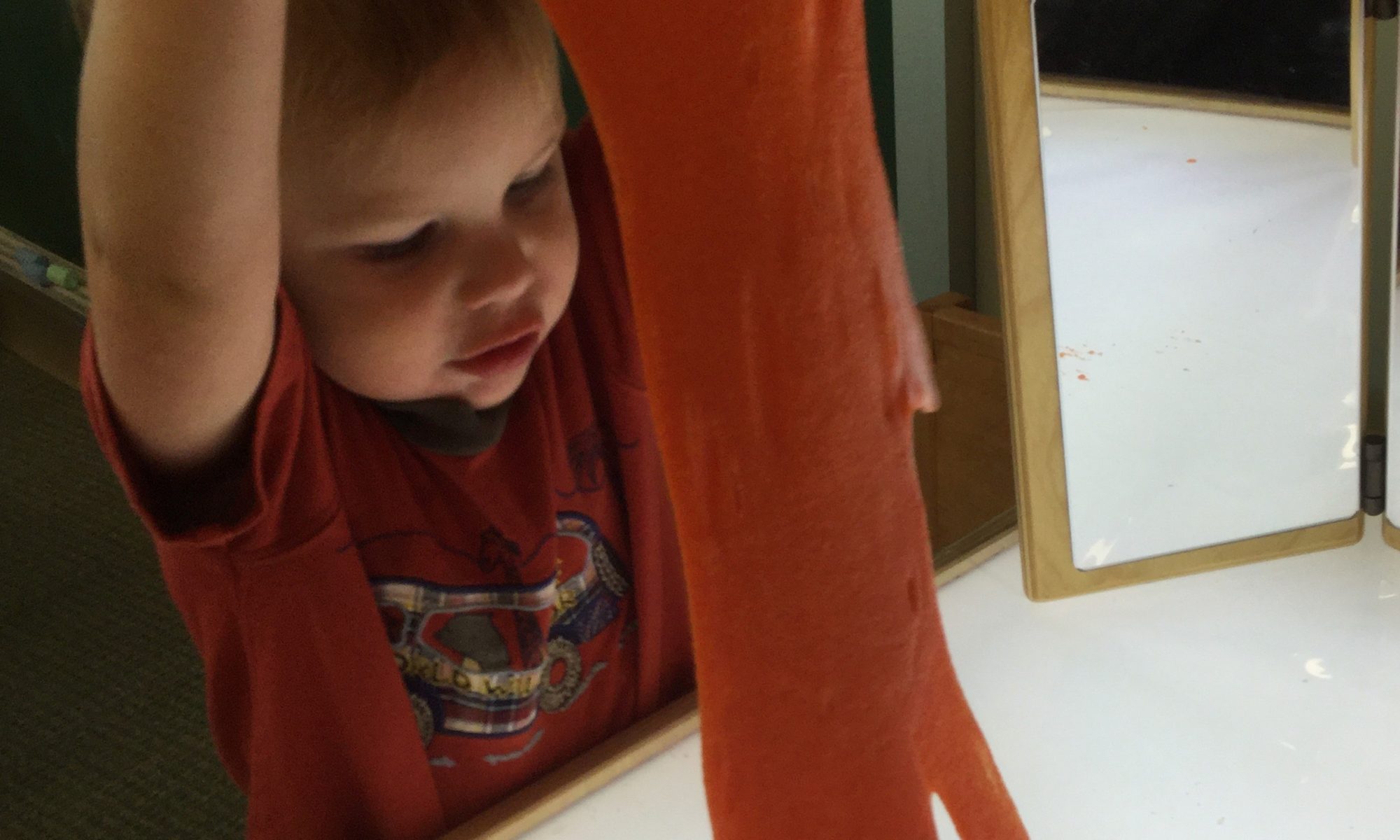Materials
Large plastic tub
White rice
White vinegar
Orange food coloring (I recommend Wilton’s paste coloring for the vibrant results)
Ziploc bag (gallon size)
Directions
To color white rice, pour 2–3 cups rice into the Ziploc bag. Add a teaspoon of vinegar and a small amount of color (about ¼ teaspoon). Zip the bag, and squeeze the bag repeatedly until all the rice is colored satisfactorily. Then lay a sheet of newsprint on the counter and spread the colored rice in a thin layer on the paper to dry. It will take an hour or two. Repeat the process if you want a greater quantity of rice.
When the rice is dry, pour it into a large tub. Add measuring cups for scooping and pouring. We added orange pool noodles cut into 1-inch thick slices. We also added orange clementines for even more orange-ness! Let the fun begin!














 this stage of development learn through exploring the environment that objects still exist even when covered up or hidden. Try it again with another object. It’s a fun game to play again after a few weeks. Playing peek-a-boo is another way to illustrate this concept with younger babies.
this stage of development learn through exploring the environment that objects still exist even when covered up or hidden. Try it again with another object. It’s a fun game to play again after a few weeks. Playing peek-a-boo is another way to illustrate this concept with younger babies.